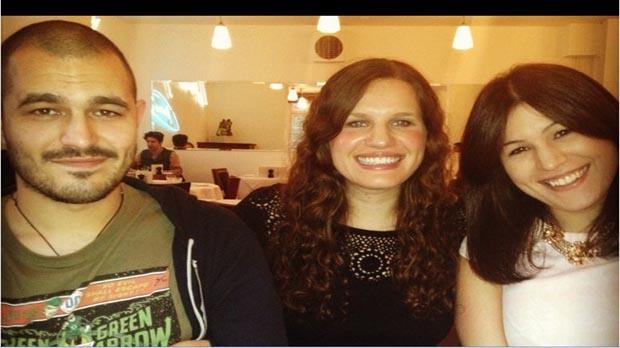
“I was keen to go on a clinical trial. I wanted to try new cancer treatments and hopefully help future generations.”
Please note - this trial is no longer recruiting patients. We hope to add results when they are available.
This trial is testing a new way of diagnosing breast cancer, using light. It is called elastic scattering spectroscopy (ESS). In the future, it may also be used to work out whether the cancer has spread to the lymph nodes, and the likely outcome (prognosis).
A  usually diagnoses breast cancer by looking at a sample of breast tissue (a biopsy) under a microscope. The “optical biopsy system” uses light to tell if the breast tissue contains cancer cells. In future, it may be possible to use this test directly on the breast. This would be much quicker than sending samples to the laboratory.
usually diagnoses breast cancer by looking at a sample of breast tissue (a biopsy) under a microscope. The “optical biopsy system” uses light to tell if the breast tissue contains cancer cells. In future, it may be possible to use this test directly on the breast. This would be much quicker than sending samples to the laboratory.
Doctors will look at tissue from two groups of patients. These are people having either
The aim of this study is to see how good ESS is at diagnosing cancer.
Doctors hope that they will be able to use it in the future to diagnose cancer very quickly. This will help them make treatment decisions straight away. You will not have any direct benefit from taking part in this trial, and it is unlikely to change your treatment plan in any way. But the results of the trial will be used to help people with breast cancer in the future.
You can enter this trial if you are a patient at the breast clinic at University College London Hospital and are waiting for any of these procedures
This trial is hoping to recruit 209 people in total into 2 groups. The group you are in depends on the procedure you are going to have. Group 1 is for people having a biopsy in clinic. Group 2 is for people having surgery for a  breast lump or breast cancer.
breast lump or breast cancer.
If you are in group 1, the doctor will put some local anaesthetic on the biopsy site. They will then place the biopsy needle into the breast tissue, ready to collect some breast cells. Before they collect the cells, the researcher will gently slide a tiny wire (probe) through this needle. They will then take a light measurement. This will take a few seconds. When they have taken the readings the researcher will remove the probe. The doctor will then take the biopsy.
If you are in group 2, the doctor will take the optical readings from a sample of your breast tissue that was removed during your operation. So, the procedure will not affect you or your surgery in any way.
You will either have the optical biopsy done as part of a routine biopsy at your clinic appointment, or it will be done on tissue removed during surgery. You will not need to go to the hospital for any extra appointments as a result of taking part in this trial.
The research team haven’t seen any side effects with this procedure so far. But it is a new procedure so there may be side effects we don’t know about yet.
Please note: In order to join a trial you will need to discuss it with your doctor, unless otherwise specified.
Mr Mohammed RS Keshtgar
Professor Stephen G Bown
Experimental Cancer Medicine Centre (ECMC)
If you have questions about the trial please contact our cancer information nurses
Freephone 0808 800 4040

“I was keen to go on a clinical trial. I wanted to try new cancer treatments and hopefully help future generations.”